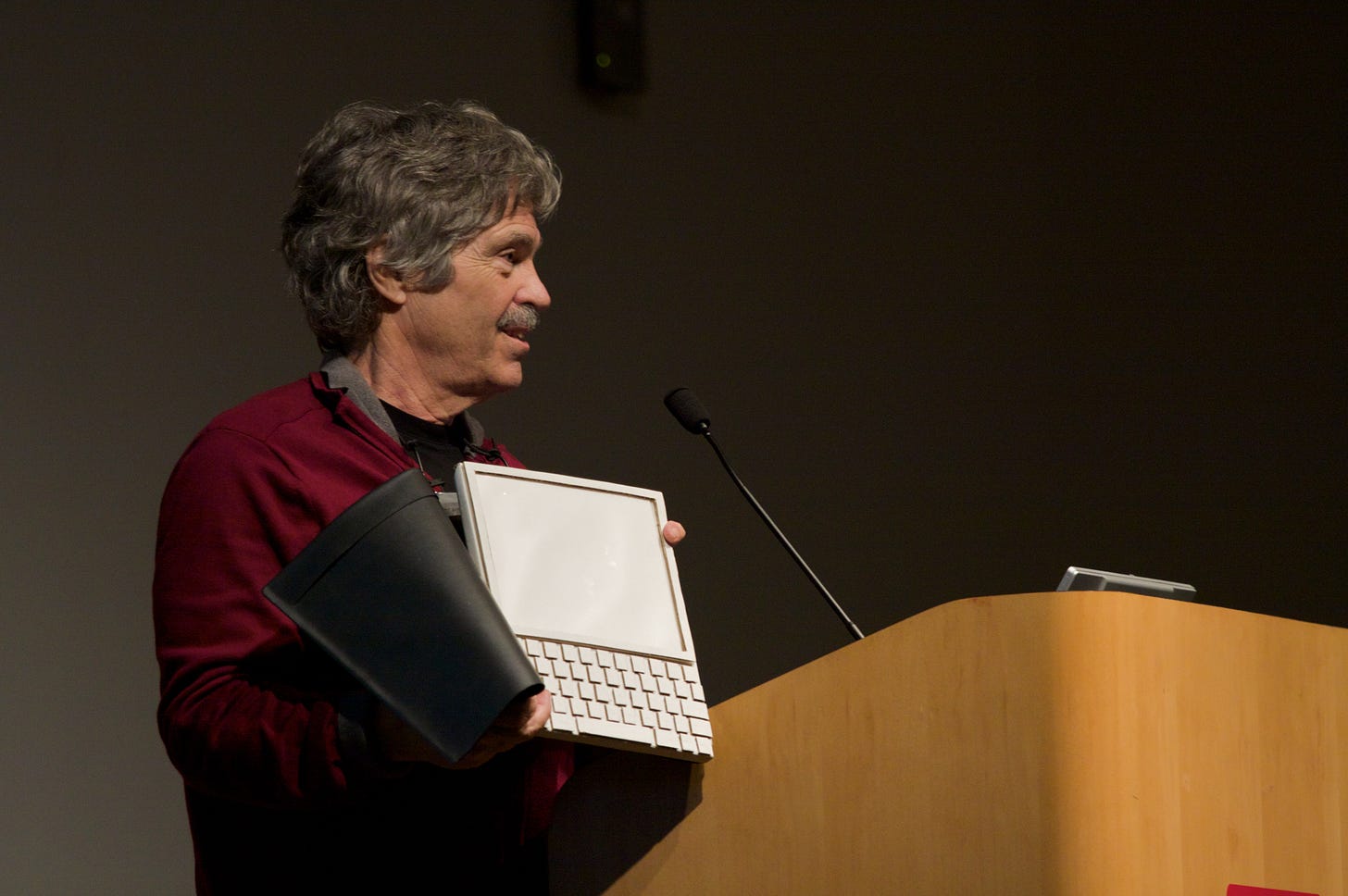Welcome, Anodyne
My principal contribution to computing as a product
Anodyne is the name I have given to my project to develop a kind of personal supercomputer. As a product it retreads much of the placement and marketing constraints of the first Apple personal computers, since it will be a heavily self-integrated design that includes everything out-of-the-box to help drive mass customer appeal. Lurking under the deceptively similar looks however is a leviathan of informatics that until now the tech industry has been either too fragmented or too corrupt to actualise. Anodyne is a serious contender for the Holy Grail of Xerox PARC, the device both Bill Gates and Steve Jobs tried and failed to steal: the Dynabook.
Originally, the Dynabook was not the intended image, and it is still nothing more than a congruence resulting from gnosis that Anodyne has with it. The name overlap was coincidental, and the tablet form factor was derived from my own imagination projected onto an Apple IIc housing which I only later discovered was derived from the Dynabook. But it is still a noteworthy congruence, because the Dynabook’s inventor, Turing Award laureate Alan Kay, set such an ambitious threshold for the user experience and its transparency and self-evidence in the hands of children and in the employ of self-learning that no modern computer architecture to date has been conducive to it. It was a divine accident then that Anodyne’s critical revisiting of such technologies as virtual memory, out-of-order execution, pre-emptive multitasking and more silicon-intensive crutches that underpin contemporary computing that allows it to reach so much more closely to those thresholds Alan Kay always explained other devices failed to attain.
It is hard to overstate the magnitude of this discovery. Xerox PARC opened the door to an estimated $40 trillion in advancements of the human race as a direct result of the fruits of their research. Both Bill Gates and Steve Jobs infamously tried their best to capitalise on having the PARC as their neighbour, furiously commercialising as much as they possibly could. Although they succeeded with things like networking and graphical user interfaces, all attempts made by both companies to date failed to actualise the full vision of the one true device all of those technologies were made for: the Dynabook. Billions upon billions of dollars were realised through this technological revolution in spite of the absence of its star, and I have it.




